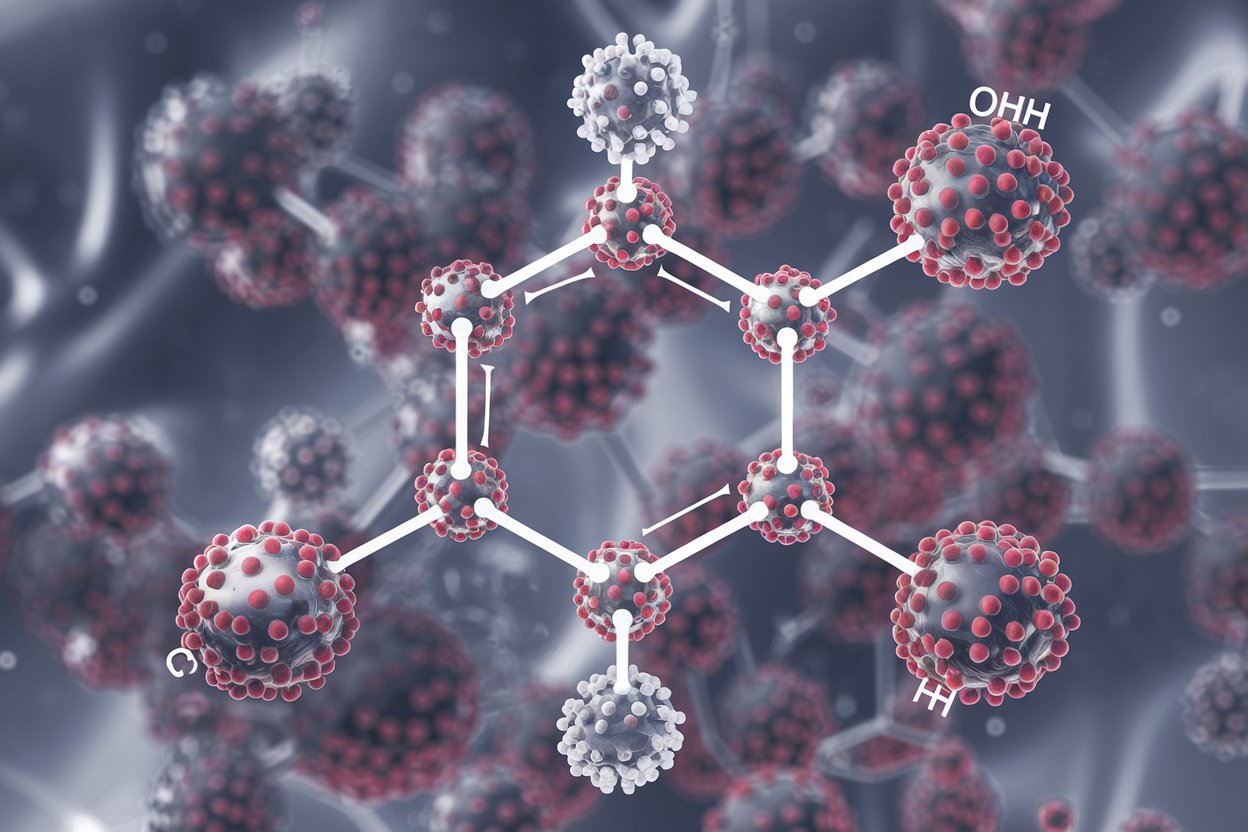
4-Hydroxyestriol is a fascinating compound with a unique role in the human body. This estrogen metabolite, derived from estriol, plays a significant part in various biological processes. But what exactly is 4-Hydroxyestriol, and why should you care? Understanding this compound can shed light on its potential health implications, including its involvement in hormone regulation and possible links to certain diseases. Whether you're a science enthusiast, a student, or just curious about how your body works, these 25 facts about 4-Hydroxyestriol will provide you with a deeper appreciation of this intriguing molecule. Let's dive into the world of 4-Hydroxyestriol and uncover its secrets!
Key Takeaways:
- 4-Hydroxyestriol, a compound derived from estriol, plays a role in pregnancy, bone health, and hormone therapy. It's like a helpful estrogen sidekick with potential benefits for women's health.
- Research on 4-Hydroxyestriol is ongoing, exploring its potential in cancer prevention, hormone therapy, and even neuroprotective effects. It's like a superhero molecule with exciting possibilities for personalized medicine in the future.
What is 4-Hydroxyestriol?
4-Hydroxyestriol is a metabolite of estriol, one of the three main estrogens produced by the human body. It plays a role in various biological processes and has been the subject of numerous studies. Here are some intriguing facts about this compound.
-
Chemical Structure: 4-Hydroxyestriol has the chemical formula C18H24O4, making it a complex organic molecule.
-
Metabolite of Estriol: It is derived from estriol, which is one of the three main estrogens, the others being estradiol and estrone.
-
Presence in Pregnancy: This compound is predominantly found in pregnant women, as it is produced in significant amounts by the placenta.
-
Role in Estrogen Metabolism: It is part of the estrogen metabolism pathway, which involves the conversion of estriol into various metabolites.
-
Biological Activity: 4-Hydroxyestriol exhibits estrogenic activity, meaning it can bind to estrogen receptors and mimic the effects of estrogen in the body.
Health Implications of 4-Hydroxyestriol
Understanding the health implications of 4-Hydroxyestriol can provide insights into its potential benefits and risks. Here are some key points.
-
Cancer Research: Studies have investigated its role in breast cancer, as estrogen metabolites can influence cancer cell growth.
-
Hormone Replacement Therapy: It is sometimes considered in hormone replacement therapy due to its estrogenic properties.
-
Bone Health: Estrogens, including 4-Hydroxyestriol, play a role in maintaining bone density, which is crucial for preventing osteoporosis.
-
Cardiovascular Health: Estrogen metabolites can impact cardiovascular health, influencing factors like cholesterol levels and blood vessel function.
-
Menopausal Symptoms: It may help alleviate menopausal symptoms due to its estrogen-like effects.
Production and Detection
The production and detection of 4-Hydroxyestriol involve sophisticated biochemical processes. Here are some details.
-
Enzymatic Conversion: Enzymes in the liver convert estriol into 4-Hydroxyestriol through hydroxylation.
-
Urinary Excretion: It is excreted in urine, making it possible to measure its levels through urine tests.
-
Analytical Techniques: Techniques like mass spectrometry and high-performance liquid chromatography (HPLC) are used to detect and quantify this compound.
-
Biomarker Potential: Its levels can serve as biomarkers for certain health conditions, including hormonal imbalances and pregnancy-related issues.
-
Research Applications: Scientists use it in research to study estrogen metabolism and its effects on health.
Environmental and Dietary Factors
Environmental and dietary factors can influence the levels of 4-Hydroxyestriol in the body. Here are some interesting facts.
-
Dietary Estrogens: Foods containing phytoestrogens, like soy products, can affect estrogen metabolism and potentially alter 4-Hydroxyestriol levels.
-
Environmental Estrogens: Exposure to environmental estrogens, such as those found in plastics, can impact the body's estrogen metabolism.
-
Lifestyle Factors: Factors like stress, exercise, and overall health can influence estrogen levels and their metabolites.
-
Supplementation: Some supplements claim to support estrogen metabolism, potentially affecting 4-Hydroxyestriol levels.
-
Hormonal Imbalances: Conditions like polycystic ovary syndrome (PCOS) can disrupt estrogen metabolism, impacting this compound's levels.
Future Research Directions
Ongoing research continues to uncover new aspects of 4-Hydroxyestriol and its role in health and disease. Here are some areas of interest.
-
Cancer Prevention: Researchers are exploring its potential role in cancer prevention and treatment.
-
Hormone Therapy: Studies are investigating its use in more targeted hormone replacement therapies.
-
Metabolic Disorders: Its role in metabolic disorders, such as diabetes and obesity, is being examined.
-
Neuroprotective Effects: Some research suggests it may have neuroprotective effects, potentially benefiting conditions like Alzheimer's disease.
-
Personalized Medicine: Future research may lead to personalized medicine approaches, tailoring treatments based on individual estrogen metabolite profiles.
Final Thoughts on 4-Hydroxyestriol
4-Hydroxyestriol, a lesser-known estrogen metabolite, plays a crucial role in human biology. Its impact on hormone regulation, potential cancer prevention, and overall health cannot be overstated. Understanding this compound helps in grasping the complexities of hormonal balance and its effects on the body.
Research continues to uncover more about 4-Hydroxyestriol's benefits and risks. Staying informed about these findings can lead to better health decisions. Whether you're a student, a health enthusiast, or just curious, knowing these facts enriches your knowledge of human biology.
Keep exploring and learning about such fascinating compounds. The more we know, the better we can take care of ourselves and make informed choices about our health.
Frequently Asked Questions
Was this page helpful?
Our commitment to delivering trustworthy and engaging content is at the heart of what we do. Each fact on our site is contributed by real users like you, bringing a wealth of diverse insights and information. To ensure the highest standards of accuracy and reliability, our dedicated editors meticulously review each submission. This process guarantees that the facts we share are not only fascinating but also credible. Trust in our commitment to quality and authenticity as you explore and learn with us.
